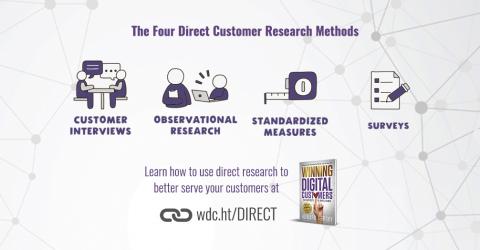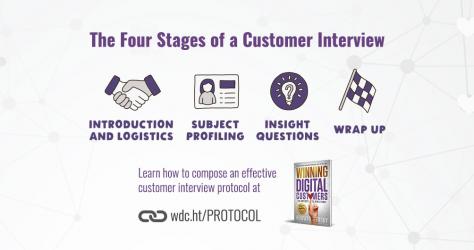This chapter focuses on research methods that involve connecting to actual customers, which we call “direct” customer research. There is no substitute for spending time with customers and gaining a rich picture of their world. But just “spending time” with customers is not the most effective way to conduct direct research. Fortunately, there are specific methodologies that help ensure you talk to the right sample of customers and interact with them in ways that allow you to maximize the speed and accuracy of learning. Here are the 4 indirect research methods that we have found to be the most effective.
1. Customer Interviews: When planning any type of “real-time” customer research, such as interviews, there are a few steps to the process:
- Target Research Subjects:
- Recruit Customers:
- & 4. Develop a Protocol and Conduct the Interview
2. Observational Research: During observational research, instead of asking someone about their experience, you observe them engaged in an actual task in the moment (such as buying or using your product). We break observational research into 6 techniques:
- Created Situations During Interview
- Ethnography
- Micro Interactions
- Consented Observation
- Directed Observation
- Customer Service Shadowing
3. Surveys: Surveys are a valuable research tool because they allow you to reach a much larger number of subjects than would be practical with any sort of one-on-one activity.
4. Standardized Measures: The most widely known standard measure of customer satisfaction is called Net Promoter Score (or NPS). NPS is based on the belief that the best way to find out if someone is satisfied with your product or service is not to ask them if they are satisfied, but rather to ask them about their likelihood of recommending your product/service to a family member or friend.
There are other methods you can use to engage directly with customers that haven’t been covered in this chapter. However, even if you stick only to the research methods described in this chapter and Chapter 7, you can get all the insight necessary to drive a massively successful transformation.




